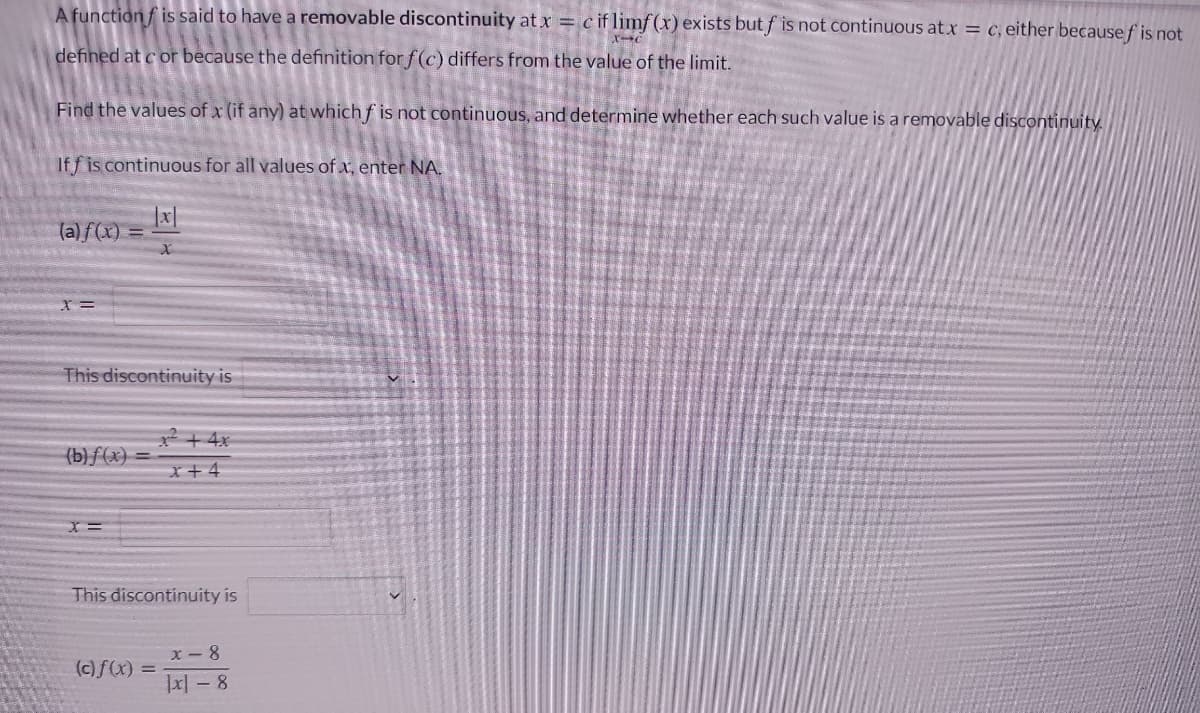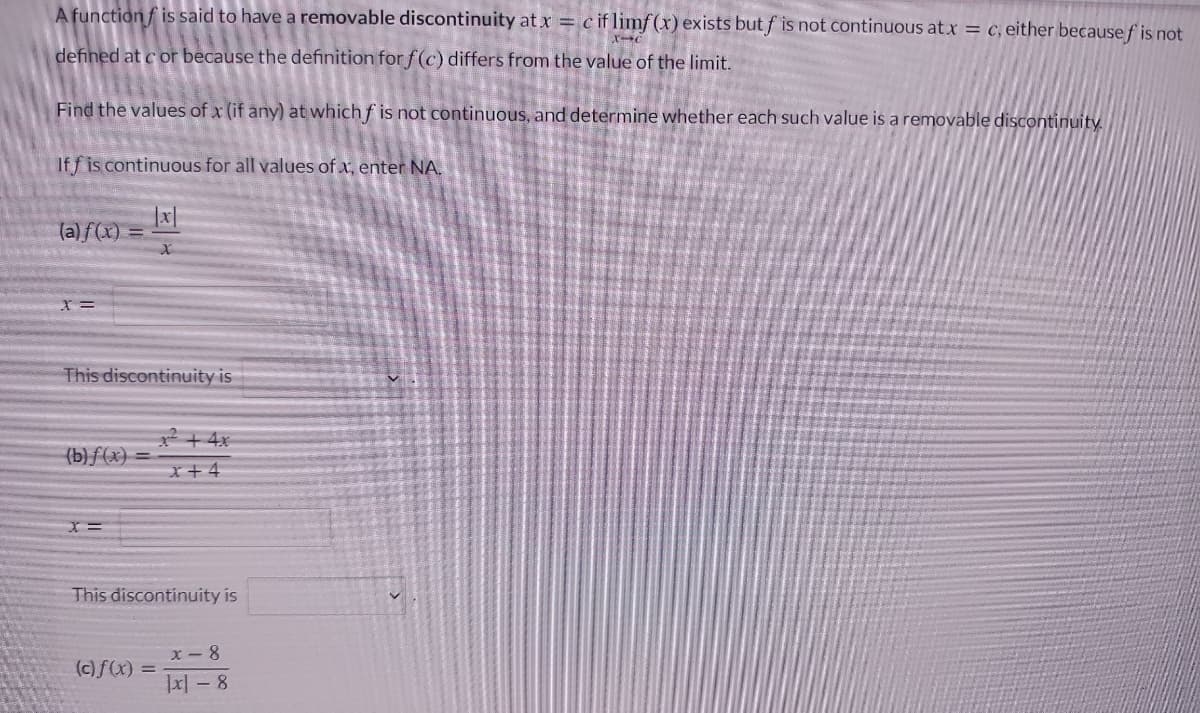A function f is said to have a removable discontinuity at x = c if limf (x) exists but f is not continuous at x = c, either because f is not defined at c or because the definition for f(c) differs from the value of the limit. Find the values of x (if any) at which f is not continuous, and determine whether each such value is a removable discontinuity. Iff is continuous for all values of x, enter NA. (a) f(x) = This discontinuity is 2+4x (b)f(x) = x+4 This discontinuity is (c)f(x) = x| - 8
A function f is said to have a removable discontinuity at x = c if limf (x) exists but f is not continuous at x = c, either because f is not defined at c or because the definition for f(c) differs from the value of the limit. Find the values of x (if any) at which f is not continuous, and determine whether each such value is a removable discontinuity. Iff is continuous for all values of x, enter NA. (a) f(x) = This discontinuity is 2+4x (b)f(x) = x+4 This discontinuity is (c)f(x) = x| - 8
Chapter3: Functions
Section3.3: Rates Of Change And Behavior Of Graphs
Problem 2SE: If a functionfis increasing on (a,b) and decreasing on (b,c) , then what can be said about the local...
Related questions
Question
the 2nd pic is the continuation.

Transcribed Image Text:A function f is said to have a removable discontinuity at x = c if limf(x) exists but f is not continuous at x = c, either because f is not
defined at c or because the definition for f(c) differs from the value of the limit.
Find the values of x (if any) at which f is not continuous, and determine whether each such value is a removable discontinuity.
If f is continuous for all values of x, enter NA.
(a)f(x) =
This discontinuity is
2+ 4x
(b)f(x) =
x+4
This discontinuity is
X - 8
|x| – 8
(c)f(x) =

Transcribed Image Text:A function f is said to have a removable discontinuity at x = c if limf(x) exists but f is not continuous at x = c, either because f is not
defined at c or because the definition for f(c) differs from the value of the limit.
Find the values of x (if any) at which f is not continuous, and determine whether each such value is a removable discontinuity.
If f is continuous for all values of x, enter NA.
(a) f(x) =
This discontinuity is
2+ 4x
(b)ƒ (x) =
x+4
This discontinuity is
X- 8
(c)f(x) =
Jx| – 8
Expert Solution
This question has been solved!
Explore an expertly crafted, step-by-step solution for a thorough understanding of key concepts.
Step by step
Solved in 4 steps with 4 images

Recommended textbooks for you

